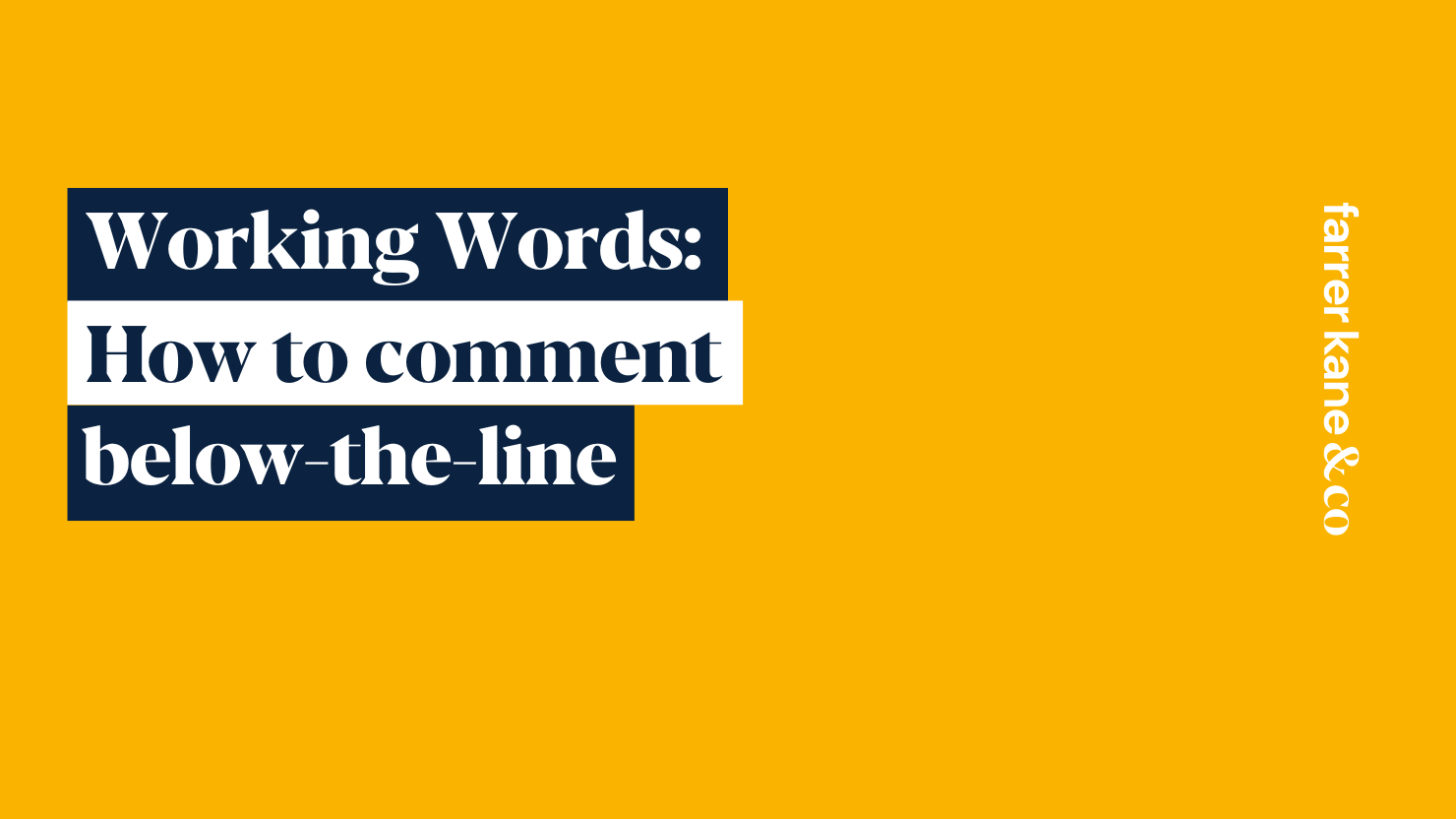Insights
Working Words. How to comment below-the-line

In this instalment of Working Words, we share some thoughts on how to make below the line comments work for you.
We all know the value of being quoted in an article: it helps raise your profile amongst the title’s readership; it allows you to appear alongside fellow experts; it presents your insights with greater economy than a bylined article; and provides you with the chance to demonstrate your creative side with a well-written soundbite.
This is not, however, the only way of adding your voice to a debate, be it in a national publication or a specialised trade. Letters to the editor, or even below-the-line comments on online news sites, can provide equally good platforms to spread your message and cut through the white noise.
But how?
Letters to the editor: Though each paper has its own guidelines, which make indispensable reading before putting pen to paper, a letter to the editor typically responds to an article from the previous day’s edition. Thus, the key is to spot the right piece and act quickly.
But, it’s not just about picking the contentious topics. A short (roughly 150-word) emphatic letter critiquing recently enacted legislation is as likely to be published as ebullient praise for a recent government, or private sector, initiative.
Avoid the rant; make sure your authority shines through. Everyone has an opinion, but by choosing the topics on which you engage carefully you will be ensure you are well placed to offer expert insights. Clarity over pretension, fact over fury, is the order of the day.
And think about authorship, too. Should that letter automatically be attributed to the CEO, or would it have greater credence if penned by another member of the team?
Commenting below-the-line: Loved by some journalists and loathed by others, comment threads on online sites are a great way of reacting quickly to articles. Widely-read and typically interactive in nature, comments are also a great way of reaching the paper’s readership directly. It is also a brilliant way of holding a journalist to account should no ‘right of reply’ be offered; incredibly rare for UK media.
The trick here is to be engaging, to-the-point and, situation permitting, humorous. The comment one Guardian reader left on the site following the EU referendum, for example, achieved blanket national coverage.
Be careful to avoid abuse or overly critical language; this is trolling and will harm your brand and undermine your point.
Social: Twitter is more than just birdsong: it shapes debates and has become an indispensable tool for many a brand.
It is helpful to see the platform as a vehicle for engaging with the consumer: a topical, reactive tweet has the potential to be seen by millions who can react in real time.
And it can enable you to demonstrate real expertise, too. Pulling quotes as part of retweets, for instance, allows you to add your voice to specific elements of a debate. Posing questions to your followers and responding to the answers, meanwhile, enables you to present yourself as the authority on a topic.
What’s more, Twitter allows you to paint a picture – literally. Using images has not only been shown to boost engagement, but also enables you to easily convey a thousand words!
Picking up on topical issues and engaging in debate in relevant industry LinkedIn groups is also a useful way of boosting your visibility and illustrating your expertise. Do so with an authentic interest in the topic at hand, rather than in an overtly ‘salesy’ manner and take care to listen to gauge the tone of the group before jumping in.
Updated February 2023

